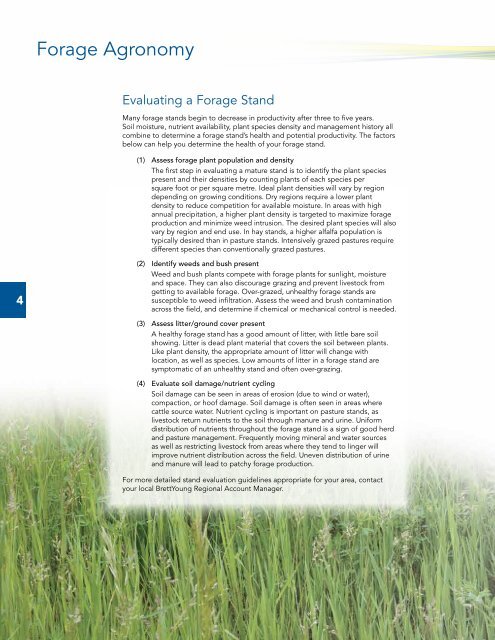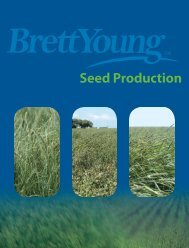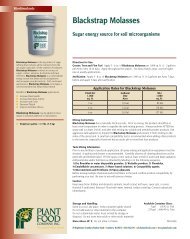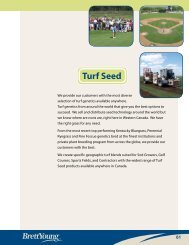2012 Fo r a g e g u id e - BrettYoung
2012 Fo r a g e g u id e - BrettYoung
2012 Fo r a g e g u id e - BrettYoung
Create successful ePaper yourself
Turn your PDF publications into a flip-book with our unique Google optimized e-Paper software.
<strong>Fo</strong>rage AgronomyEvaluating a <strong>Fo</strong>rage StandMany forage stands begin to decrease in productivity after three to five years.Soil moisture, nutrient availability, plant species density and management history allcombine to determine a forage stand’s health and potential productivity. The factorsbelow can help you determine the health of your forage stand.(1) Assess forage plant population and densityThe first step in evaluating a mature stand is to <strong>id</strong>entify the plant speciespresent and their densities by counting plants of each species persquare foot or per square metre. Ideal plant densities will vary by regiondepending on growing conditions. Dry regions require a lower plantdensity to reduce competition for available moisture. In areas with highannual precipitation, a higher plant density is targeted to maximize forageproduction and minimize weed intrusion. The desired plant species will alsovary by region and end use. In hay stands, a higher alfalfa population istypically desired than in pasture stands. Intensively grazed pastures requiredifferent species than conventionally grazed pastures.4(2) Identify weeds and bush presentWeed and bush plants compete with forage plants for sunlight, moistureand space. They can also discourage grazing and prevent livestock fromgetting to available forage. Over-grazed, unhealthy forage stands aresusceptible to weed infiltration. Assess the weed and brush contaminationacross the field, and determine if chemical or mechanical control is needed.(3) Assess litter/ground cover presentA healthy forage stand has a good amount of litter, with little bare soilshowing. Litter is dead plant material that covers the soil between plants.Like plant density, the appropriate amount of litter will change withlocation, as well as species. Low amounts of litter in a forage stand aresymptomatic of an unhealthy stand and often over-grazing.(4) Evaluate soil damage/nutrient cyclingSoil damage can be seen in areas of erosion (due to wind or water),compaction, or hoof damage. Soil damage is often seen in areas wherecattle source water. Nutrient cycling is important on pasture stands, aslivestock return nutrients to the soil through manure and urine. Uniformdistribution of nutrients throughout the forage stand is a sign of good herdand pasture management. Frequently moving mineral and water sourcesas well as restricting livestock from areas where they tend to linger willimprove nutrient distribution across the field. Uneven distribution of urineand manure will lead to patchy forage production.<strong>Fo</strong>r more detailed stand evaluation gu<strong>id</strong>elines appropriate for your area, contactyour local <strong>BrettYoung</strong> Regional Account Manager.






